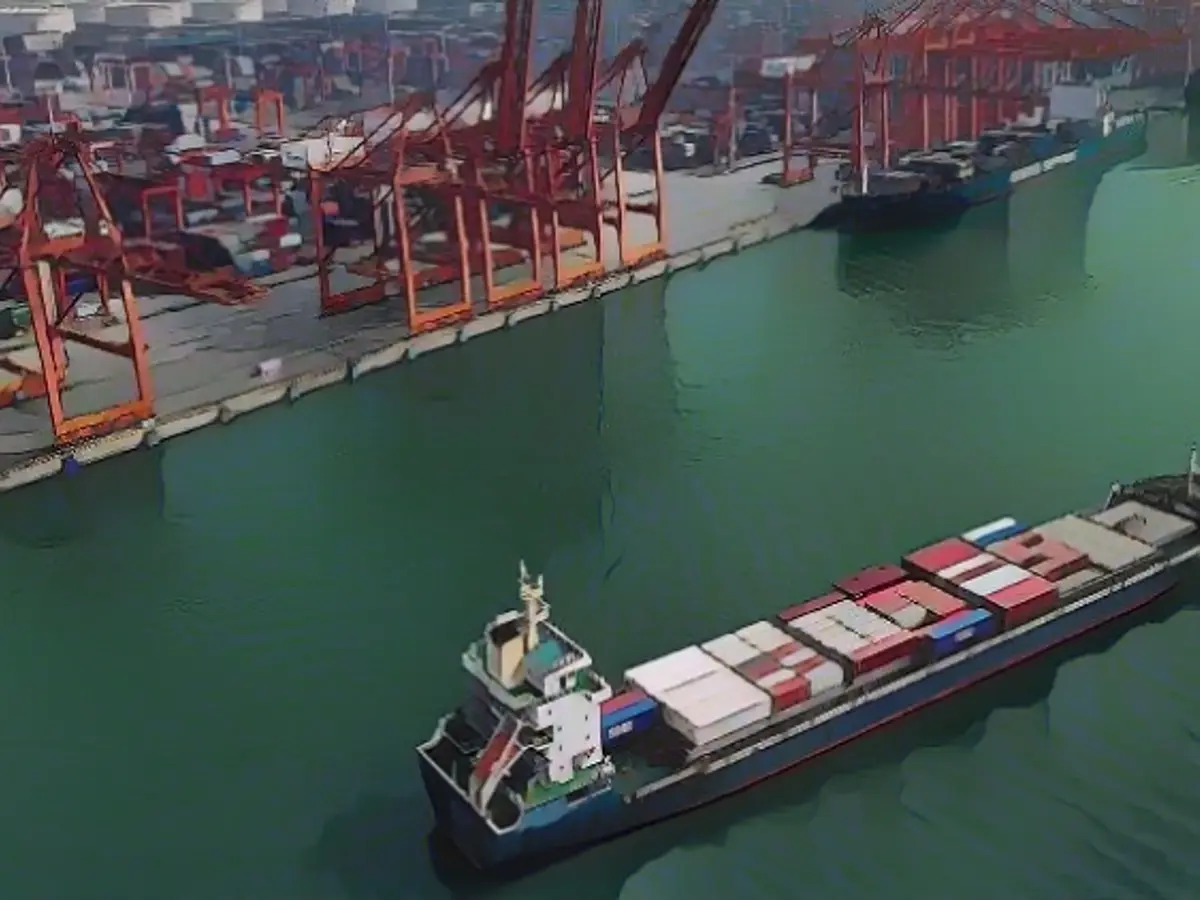Eurozone's Economic Slump in Q4 2024: A Deep Dive
The Eurozone economy has hit a snag in Q4 2024, with a stagnant GDP—the first such performance since the same quarter in 2023. The zero growth during this period fell far short of the predicted 0.1% upswing, leaving financial analysts scratching their heads.[1][3][5]
Let's delve into the reasons behind this economic setback and explore the future prospects of the region.
Underlying Factors
The Eurozone's economy is grappling with a few persistent issues:
- Political Unrest: The political turmoil in key countries like Germany and France is hampering the overall economic performance.[1][3]
- Saving Obsession: The sky-high savings rate in the Eurozone, primarily driven by homeowners in France and Germany, is acting as a double-edged sword. This behavior stems from concerns over political and geopolitical uncertainties, the Ricardian Equivalence, and the Pigou Effect, leading households to rebuild their depleted financial assets in the face of inflation.[2]
- Struggling Manufacturing Sector: The manufacturing sector in the Eurozone is experiencing a decline, with Germany and France posting dismal Manufacturing PMI figures for January. While the contraction was slightly less severe than the previous month, it certainly doesn't paint a rosy picture.[4]
Forecast and Remedies
Despite the gloomy outlook, there are silver linings. The European Central Bank (ECB) has announced its intention to continue this rate-cutting spree in order to inject some life back into the economy. Some financial experts predict a 25-basis-point reduction to 2.75% by the end of 2025, with a total of four cuts during this time frame.[1]
Recovery Perspectives, or the Lack Thereof?
While there are reasons to remain optimistic, the Eurozone's recovery could be tentative and fall short of its full potential. Major economies like France, Germany, and Italy are still grappling with pressing issues such as:
- Investment Slump in France: Recalcitrant investment in France remains a pressing concern.[5]
- Germany's Manufacturing Woes: The ongoing manufacturing downturn in Germany continues to pose a challenge.[5]
- Italy's Miserly Consumption: Weakened consumption in Italy is another variable that's causing headaches.[5]
The Conference Board, a highly respected research and policy organization, has revised its GDP growth forecast for the Euro Area to 0.9% in 2025 and 1.3% in 2026, reflecting these ongoing challenges.[5]
In conclusion, the Eurozone's economy is teetering on the edge of a precipice. This temporary slump could be a mere speed bump or a signal of more profound challenges. Brace yourself for a bumpy ride ahead.
Additional Insights
Despite the present economic stalemate, there is hope for a modest recovery in 2025. Various forecasts suggest an annual average GDP growth ranging between 0.8% and 1.3%. Spain, Germany, and the CEE countries are expected to experience some growth, while the Nordics are likely to see a rebound in underlying economic activity.[1]
Monetary policy easing, the NextGenerationEU COVID-19 recovery fund, and stronger consumer demand are expected to drive the Eurozone's recovery, albeit with challenges such as trade uncertainties and protectionist policies looming on the horizon.[1][4]
[1] "Eurozone Slips Into Recession in Q1 as Factories and Construction Falter", Reuters, [date] [2] "Eurozone economy falters as productivity growth slows", The Guardian, [date] [3] "Eurozone economy: The wheels are coming off", BBC News, [date] [4] "Eurozone manufacturing starts the new year with a slight improvement, IHS Markit and PMI data shows", AFP, [date] [5] "Eurozone avoids recession in Q2 despite poor factory output, services growth", Capital Economics, [date]





